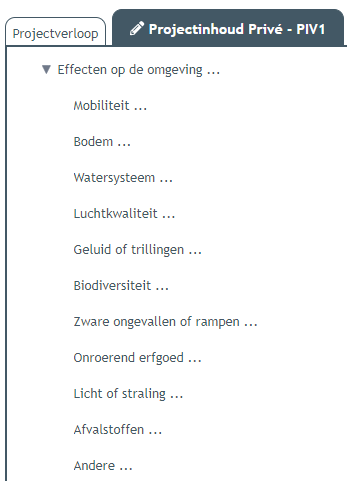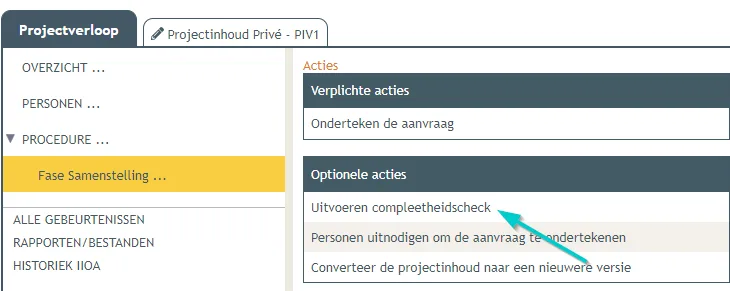De (lange) weg naar groen licht!
Procedure bij het doorlopen van een aanvraag voor een omgevingsvergunning

Inhoudsopgave
Wettelijk kader
Het Besluit van de Vlaamse Regering van 27 november 2015 vormt de kern van het wettelijk kader voor de omgevingsvergunning in Vlaanderen. Dit besluit geeft uitvoering aan het Decreet van 25 april 2014 betreffende de omgevingsvergunning.
De omgevingsvergunning werd ingevoerd om de bestaande procedures rond bouw- en milieuvergunningen te stroomlijnen en te integreren in één enkel proces. Vóór de invoering van deze wetgeving moesten aanvragers vaak twee aparte procedures doorlopen: een stedenbouwkundige vergunning en een milieuvergunning. Dit kon leiden tot lange doorlooptijden, tegenstrijdige eisen en onzekerheid voor aanvragers. Met de omgevingsvergunning worden deze procedures samengevoegd, wat het proces eenvoudiger en efficiënter maakt.
Het Besluit van de Vlaamse Regering van 27 november 2015 stelt de regels vast voor de aanvraag, behandeling en uitvoering van de omgevingsvergunning. Het biedt ook een kader voor het gebruik van een digitaal platform, het Omgevingsloket, waarmee aanvragers hun dossiers online kunnen indienen en opvolgen.
Dit artikel richt zich uitsluitend op het milieuluik van de omgevingsvergunning.
Hulp nodig bij de aanvraag van een omgevingsvergunning?
Wat is een milieuvergunning?
Een milieuvergunning is een officiële toelating van de overheid voor activiteiten die mogelijk een impact hebben op het milieu. Denk hierbij aan industriële activiteiten, het lozen van afvalwater, of de exploitatie van een bedrijf met een aanzienlijke uitstoot van broeikasgassen. Het doel van de milieuvergunning is ervoor te zorgen dat deze activiteiten gebeuren met respect voor de geldende milieuregels en -normen, en met de nodige bescherming van mens en natuur.
Het belang van de milieuvergunning binnen de omgevingsvergunning.
Hoewel de omgevingsvergunning een geïntegreerd systeem is, behoudt de milieuvergunning haar cruciale rol. Projecten die een invloed kunnen hebben op het milieu blijven onderworpen aan strikte eisen om de milieukwaliteit te waarborgen.
Bedrijven en particulieren die milieubelastende activiteiten willen uitvoeren, moeten via de omgevingsvergunningsprocedure dus ook een milieuvergunningsluik indienen. Dit luik behandelt onder andere de evaluatie van de risico’s voor mobiliteit, biodiversiteit, lucht, water, bodem, licht en geluidsoverlast en houdt rekening met de bescherming van de volksgezondheid en de omgeving.
Procedure voor het indienen van een milieuvergunning.
Voorbereiding van de aanvraag
Een goede voorbereiding is essentieel. Aanvragers moeten een gedetailleerd dossier indienen met informatie over de aard van de activiteit, de locatie, de mogelijke milieueffecten en de maatregelen die genomen zullen worden om de impact op het milieu te beperken.

Indienen via het omgevingsloket
Het indienen van een aanvraag gebeurt digitaal via het Omgevingsloket (www.omgevingsloketvlaanderen.be). Dit platform is ontworpen om het proces te centraliseren en te vereenvoudigen. Aanvragers moeten hun dossier volledig en nauwkeurig indienen, omdat onvolledige dossiers kunnen leiden tot vertragingen of zelfs afwijzingen. De volledigheid van het dossier kan gecontroleerd worden door een compleetheidscheck (onder het menu Projectverloop) uit te voeren.

Let wel: Het resultaat van de compleetheidscheck geeft een overzicht van de ontbrekende bijlagen, documenten of plannen, maar geeft geen informatie over de volledigheid van de inhoud van de aanvraag.
Openbaar onderzoek en adviesverlening
Na indiening volgt er een fase van adviesverlening en eventueel openbaar onderzoek. Dit onderzoek biedt burgers en belanghebbenden de kans om inspraak te hebben in de aanvraag. Voor projecten die een aanzienlijke impact op het milieu kunnen hebben, is het openbaar onderzoek verplicht. Tijdens deze periode kunnen bezwaren en opmerkingen worden ingediend, die door de bevoegde overheid in overweging worden genomen.
Daarnaast vragen de bevoegde overheden advies aan verschillende instanties, zoals de gemeentelijke milieudienst, Vlaamse Milieumaatschappij (VMM), Agentschap voor Natuur en Bos (ANB). De adviezen van deze instanties zijn belangrijk om een volledig beeld te krijgen van de milieutechnische haalbaarheid en de risico’s van het project.
Beslissing van het bestuur
Na het openbaar onderzoek en de adviesverlening neemt het bevoegde bestuursorgaan een beslissing. Dit kan de gemeente zijn, maar voor complexe of grote projecten is het provincie of de Vlaamse overheid die de knoop doorhakt.
De beslissing kan positief zijn, negatief, of positief met voorwaarden. In het geval van een negatief besluit kan de aanvrager in beroep gaan tegen deze beslissing. Bij een positief besluit moet de aanvrager via de aanplakking (gele A3) de beslissing bekend maken, maar krijgt het publiek nog 30 dagen de tijd om alsnog beroep aan te tekenen tegen de beslissing. Indien geen beroep aangetekend werd na 30 dagen, kan de aanvrager starten met zijn activiteiten, mits hij zich aan de gestelde voorwaarden houdt.
Beroepsprocedure
Als een aanvrager niet akkoord gaat met de beslissing, kan hij beroep aantekenen. Dit beroep moet worden ingediend binnen een bepaalde termijn (meestal 30 dagen) en gebeurt opnieuw via het Omgevingsloket. Het beroepsorgaan, dat meestal op Vlaams niveau opereert, zal de aanvraag herbekijken en een definitieve beslissing nemen.
Classificatie van inrichtingen
In Vlaanderen worden bedrijven en activiteiten die een milieuvergunning nodig hebben, ingedeeld in drie klassen, afhankelijk van hun milieu-impact:
- Klasse 1: Deze categorie omvat de grootste en meest vervuilende activiteiten, zoals chemische fabrieken, grote afvalverwerkingsbedrijven of energiecentrales. Voor deze activiteiten is een uitgebreide milieuvergunning nodig, soms aangevuld met een milieueffectenrapport (MER). Deze aanvragen worden behandeld op provinciaal of Vlaams niveau.
- Klasse 2: Deze bedrijven hebben een middelmatige impact op het milieu en moeten eveneens milieuvergunning aanvragen, maar de procedure is minder streng dan voor klasse 1. De aanvragen worden behandeld door de gemeente.
- Klasse 3: Deze bedrijven hebben een beperkte impact op het milieu. Ze zijn niet verplicht om een milieuvergunning aan te vragen, maar moeten wel een melding doen bij de bevoegde overheid, zijnde de gemeente.
Het is belangrijk dat aanvragers vooraf goed nagaan in welke klasse hun activiteiten vallen, omdat dit invloed heeft op de omvang en inhoud van het dossier.
Vergunningen met voorwaarden
Sommige milieuvergunningen worden verleend met voorwaarden. Dit betekent dat de aanvrager bepaalde maatregelen moet nemen om de milieubelasting van zijn activiteit te beperken. Deze voorwaarden kunnen betrekking hebben op de uitstoot van schadelijke stoffen, de verwerking van afvalstoffen, de bescherming van het grondwater, of de beperking van geluidsoverlast.
De naleving van deze voorwaarden wordt gecontroleerd door de bevoegde instanties, zoals de gemeentelijke milieudiensten of de Vlaamse Milieu-inspectie.
Handhaving en sancties
Bij overtredingen kan de vergunning worden ingetrokken, of kunnen er sancties worden opgelegd, zoals boetes of zelfs strafrechtelijke vervolging. Dit zorgt ervoor dat de milieubelasting van bedrijfsactiviteiten binnen de perken blijft en dat de omgeving beschermd blijft.
Conclusie
Het indienen van een milieuvergunning is een nauwkeurig gereguleerd proces. Het biedt een duidelijk kader voor bedrijven en particulieren om hun milieubelastende activiteiten te organiseren op een manier die de milieukwaliteit waarborgt. Door de integratie van de milieuvergunning in de omgevingsvergunningsprocedure wordt het proces voor de aanvrager vereenvoudigd, terwijl de bescherming van het milieu gegarandeerd blijft.
Het indienen van een milieuvergunningsaanvraag lijkt een complexe puzzel, maar geen nood, met de hulp van Prevom passen alle stukjes moeiteloos in elkaar!
Op zoek naar duidelijkheid?
Prevom heeft de expertise die u zoekt.
Wij informeren u graag over de mogelijkheden!